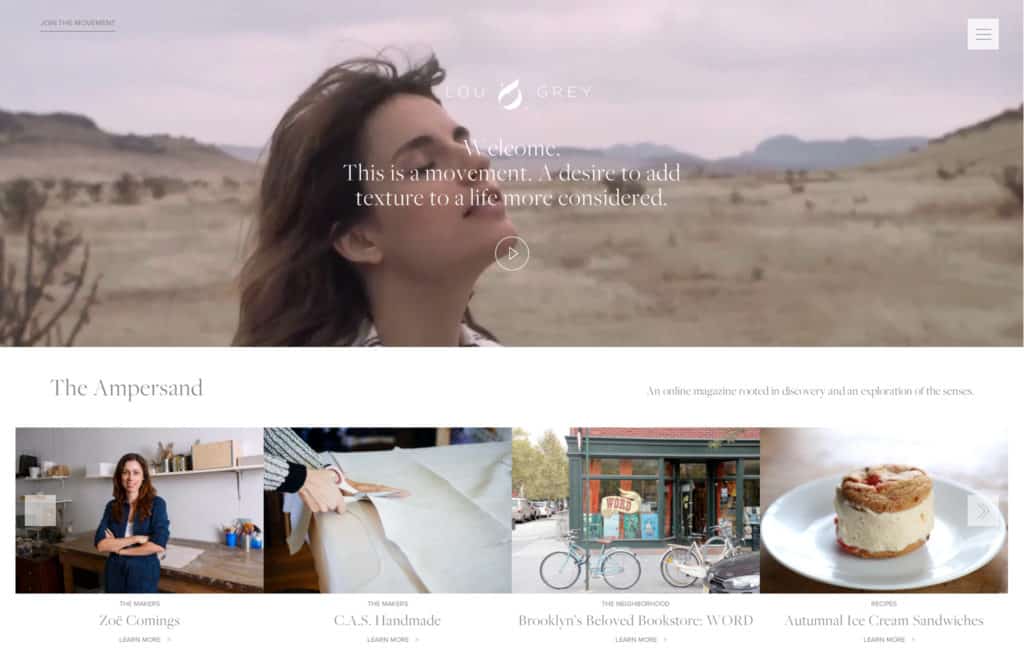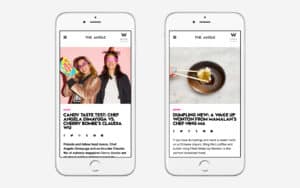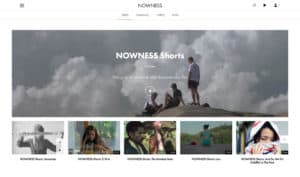
Richard Agerbeek, Co-founder & chief creative officer, Sweden Unlimited
When people think about design, they almost always think about the visual. But brands, like people, also have a personality and a story to tell. They also have relationships. And, as with people, the quality of those relationships depends on how dependable, likable and trustworthy they are–how much they are willing to give rather than simply what they want to get or sell.
In the digital space, these messages are conveyed through editorial that is designed to engage clients where they are and to reinforce a brand’s unique identity so as to establish and nurture a healthy long-term relationship that benefits all involved.
Define your audience.
If you work with a brand today, you are already aware that customers are not only people who buy your goods or services—they are your champions and your advocates. Thanks to social media we often call them “followers” but they’re more than that. They are the reason that any brand exists.
So when we say brands need to be better storytellers, what we’re really saying is that brands need to show their dependability, likeability, and trustworthiness over time in order to be desirable. We call it taking an editorial approach to brand communication, and it’s a key ingredient in some of the most successful brand strategies.
At a time when everyone is continuously staying connected through our mobile and stationary devices, people are also reading, consuming, and sharing the content they connect with more than ever before. So, part of this process is determining who your audience is, which new audiences you want to reach, and designing an editorial plan that speaks to them effectively.
Brands are in the mind of the consumer.
You have control over the messaging you send out, but it’s more difficult to influence what consumers actually feel about your brand. That’s because while products exist in the real world, brands exist in the mind of the consumer.
There are many factors that help create a brand. But at the end of the day, what really influences how people think of your brand is when they use your product or service. i.e., staying in a W Hotel, watching a NOWNESS video, or wearing a Lou & Grey sweater. Fortunately, that feeling can be influenced by the content your brands produces, the context in which it is presented and the lifestyle or story it conveys.
This is especially true for fashion where you are not just selling sweaters; you are selling the lifestyle around the sweater. Likewise, for luxury, you are selling a product and how it makes you feel because it’s not luxury unless it makes you feel luxurious.
Your content must reflect that.
Have something to say.
Successful editorial design draws in readers and engages their hearts and minds. The desired outcome should be that the reader wants to spread the word, not simply buy something.
That’s not to say that brands shouldn’t introduce e-commerce into content such as a fashion editorial that lets users tap to learn more about each product and then find out where or how to purchase — but it has to be in a user-centric way. The reason is as practical as it is philosophical: Brands that only use communication to peddle their wares will exhaust the attention spans and goodwill of their audiences and ultimately fail. Conversely, content that entertains and informs guides brand aficionados on an engaging journey that ideally ends in a sale.

Lou & Grey: A defining characteristic of this new brand by Ann Taylor Loft is that the clothing has a story to tell. With a focus on handcrafted quality and individual makers, the content strategy embodies the Lou & Grey lifestyle through intimate profiles, how-to’s and recipes, and, of course, beautiful, aspirational photography.
Meet your readers where they are
In the ideal scenario, content strategy—the plan for publishing across digital platforms over time—precedes design. As publications have done for years, brands need to determine their voice, what sorts of content they want to produce, who they want to reach, what those readers’ needs are and how to develop an editorial calendar that reflects all of that.
They also have to consider where their readers are when they are accessing their information. The growth of mobile has forever changed reader behaviors. And now that more websites are taking a responsive design approach, the organization of information, copywriting, and image assets must consider the mobile user first, while also factoring in the desktop user’s more robust content consumption expectations and how that content will render when shared on Twitter or Facebook.

Don’t be a stranger.
Publishing on a reliable schedule and in an authentic voice is essential to building trust and loyalty. Smart brand publishers already know that social media is always on, and that meeting their customers where they are shows that they’re listening and not just broadcasting an agenda. Publishing frequency depends greatly on resources and ability to create original, meaningful content on an ongoing basis. Whether once a day or once weekly, what matters is consistency. A reader that subscribes to Vogue doesn’t want to wonder when the next issue is coming, nor does she want to have to wait four weeks to be informed about what’s happening in the world of fashion. The more brands communicate on a steady basis, the more likely they are to build a following for their content.

Nowness: Knowing that most users were interested in video content, Sweden helped re-frame Nowness as a channel featuring frequently published videos that followed the “don’t be stranger” model of engagement.
There’s no one-size-fits-all solution. Not every brand should launch a blog filled with long-form articles. Maybe a Tumblr or Pinterest approach is better, or perhaps video conveys your brand’s philosophy more appropriately. Just like people, brands have a unique personality that needs to be conveyed through the type and tone of content, frequency of publishing and engagement platform. By embracing and celebrating that uniqueness through considered editorial design, brands can create and nurture ongoing relationships with their clients that survive longer than a single transaction.
Established in 2001, Sweden Unlimited is a digital agency that creates content and e-commerce platforms for fashion, luxury, and lifestyle brands.
Favorite